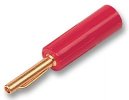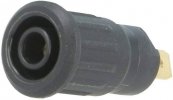Killingbeans
Major Contributor
I wonder if the direction of the grain matters
And don't forget to coat them with special audiophile varnish
I wonder if the direction of the grain matters
Do you varnish before or after the cryo treatment?And don't forget to coat them with special audiophile varnish
Look at the cables as a filter that changes the sound in some cases very slightly.So i got into DIY speaker building lately and enjoy all aspects of it, but there is something i don't understand.
Are internal speaker wires as important as external cables? if so, why are internal cables in most commercial speaker and in DIY kits are so thin and also the wiring between crossover part are even thinner. Which internal speaker wires do you use?
Look at the cables as a filter that changes the sound in some cases very slightly.
Yeah, I can't afford fancy filter cables. I just use wire.Although it's important to underline that those cases are the fringe kind. As in "audiophile" cables with ridiculous amounts of resistance, capacitance and inductance.
WIthout those wooden blocks the whole image just falls apart, and my wife stays in the kitchen, muttering. It’s like a veil is dropped.Yup.
And exactly as irrelevant, too.
As long as wire conducts electricity and doesn't heat up appreciably while doing so -- it's probably completely fit for purpose.
Just like the wiring inside a hifi component, or in the AC wiring in a domicile, as compared to the one meter long power cord in between.

source: https://www.audiosciencereview.com/...dio-fest-report-continued.45908/#post-1636720
Yes, on a philosophical point, it would make sence to have the same cable inside the cabinet as between the amplifier and speakers. The differences are really small though - its probably much more important with good connections and that you solder your internal cables to the terminals and drivers.Although it's important to underline that those cases are the fringe kind. As in "audiophile" cables with ridiculous amounts of resistance, capacitance and inductance.
Yes, on a philosophical point, it would make sence to have the same cable inside the cabinet as between the amplifier and speakers.
The differences are really small though - its probably much more important with good connections and that you solder your internal cables to the terminals and drivers.
Contact distortion with oxidized connections during long time is very real and it can be audible.
That’s why I like the arc welded connectors on Blue Jeans cables. Ridiculous overkill, but piece of mind.If you go by the layman's logic of cables having an inherent "quality" that's proportional to its mass and volume, then yes.
I imagine that cables being only just thick enough to have no audible impact will easily make the mind anxious about bottlenecks, even though they don't exist.
Absolutely. I have a feeling that a lot (if not most) of the time when people needlessly "upgrade" components and get an actual improvement in sound, they simply reflowed a bad solder joint or removed oxidation on a connector unknowingly.
Imagine the sonic possibilities of stacking two or more amplifier "foundations", one on top of the other! Dubba on da bump!WIthout those wooden blocks the whole image just falls apart, and my wife stays in the kitchen, muttering. It’s like a veil is dropped.
Is that what the goofy jack pads are called?Imagine the sonic possibilities of stacking two or more amplifier "foundations", one on top of the other! Dubba on da bump!
Don't know what jack pads are.Is that what the goofy jack pads are called?
The amps are on stands of some sort.Don't know what jack pads are.
Got it. So jack pad is another name for amplifier foundation, or platform.The amps are on stands of some sort.
Those must be powerful audio woo-woo. I've never seen that before.Got it. So jack pad is another name for amplifier foundation, or platform.
In the equivalent circuit for a loudspeaker cable, the series resistance and inductance (see red frame) are the most important factors.Are internal speaker wires as important as external cables?




